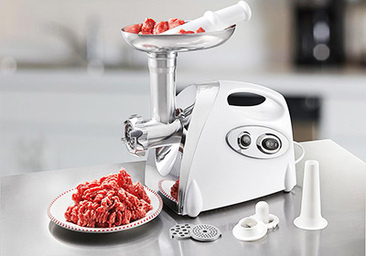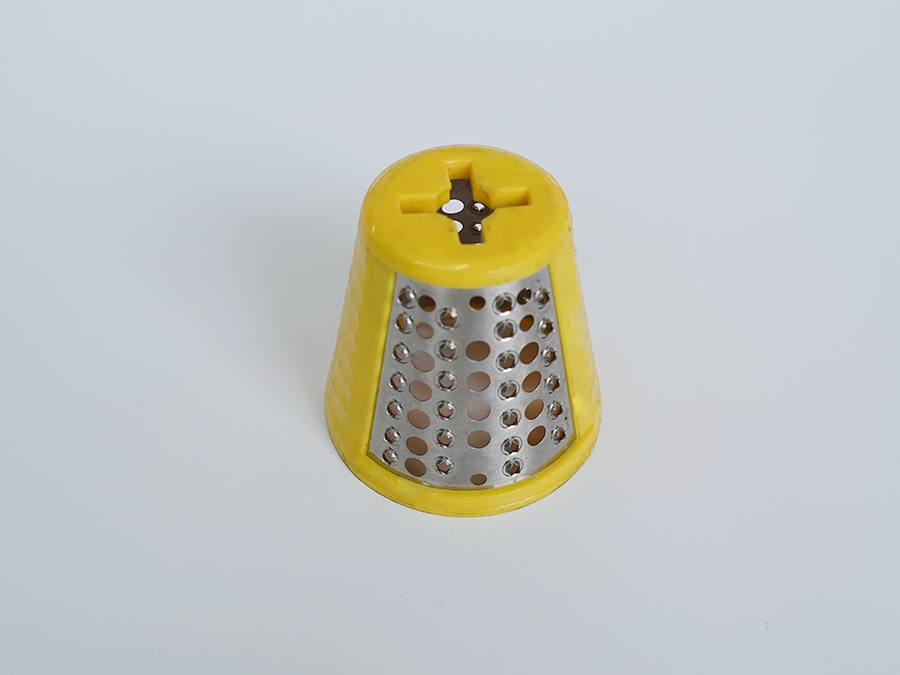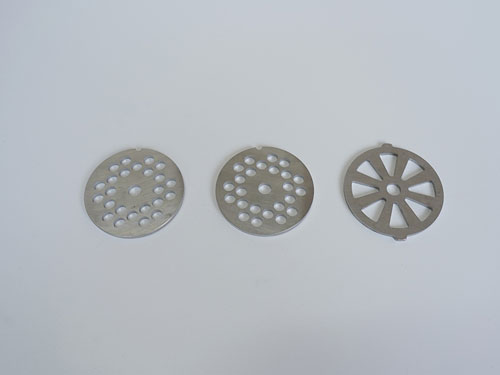
 Home > News
> News Information
Home > News
> News Information
1. Reasons for waste generation:
A. Poor quality of raw materials;
B. Improper installation, adjustment, and use of molds;
C. The worker did not feed the strip correctly along the positioning or did not ensure that the strip was fed with a certain gap;
D. Due to long-term use of the mold, there may be changes in gaps or wear on the working and guiding components of the mold;
E. Due to prolonged impact and vibration, the fastening parts of the mold become loose, causing a relative change in the installation position of the mold;
F. The operator's negligence did not follow the operating procedures.
2. The main measures to prevent waste are:
A. Raw materials must meet the specified technical conditions (strictly inspect the specifications and brands of raw materials, and conduct laboratory tests on workpieces with high requirements for dimensional accuracy and surface quality when conditions permit)
B. All aspects specified in the process specifications should be strictly followed comprehensively;
C. The tools and equipment used, such as presses and molds, should ensure that they work under normal working conditions;
D. Establish a strict inspection system during the production process, which requires a thorough inspection of the first stamped part. Only after passing the inspection can they be put into production. At the same time, inspection should be strengthened, and accidents should be dealt with in a timely manner;
E. Adhere to the civilized production system, for example, workpieces and blanks must be transported using appropriate workstation equipment, otherwise the surface of the workpiece will be crushed and scratched, affecting the surface quality of the workpiece;
F. During the stamping process, the cleanliness of the mold cavity should be ensured, and the orderly arrangement of workpieces after processing in the workplace should be neat.
3. Causes of burrs on punched parts
A. The punching gap is too large, too small, or uneven;
B. The cutting edge of the working part of the mold becomes dull;
C. Due to long-term vibration impact, the centerlines of the convex and concave molds change, and the axes do not coincide, resulting in one-sided burrs.
measures:
1) Ensure the machining accuracy and assembly quality of convex and concave molds, ensure the verticality of convex molds, withstand lateral pressure, and ensure the rigidity of the entire mold;
2) When installing the convex mold, ensure that the gap between the convex mold and the concave mold is correct, and firmly install the convex mold and the concave mold on the mold fixing plate. The end faces of the upper and lower molds should be parallel to the worktable of the press.
3) The requirements for the press include good rigidity, minimal elastic deformation, high track accuracy, and high parallelism between the pad and slider;
4) Require the pressure machine to have sufficient punching force.
The allowable height of burrs on the cut surface of punched parts
Punched sheet thickness>0.3>0.3-0.5>0.5-1.0>1.0-1.5>1.5-2.0
New trial mold burr height ≤ 0.015 ≤ 0.02 ≤ 0.03 ≤ 0.04 ≤ 0.05
The allowable burr height in production is ≤ 0.05 ≤ 0.08 ≤ 0.10 ≤ 0.13 ≤ 0.15
4. Reasons for warping and deformation of punched parts:
There are clearance forces and reaction forces on a straight line that do not generate torque. When the gap between the punch and the die is too large, the edge of the die has a conical shape, or when the contact area between the ejector and the workpiece is too small, warping deformation will occur
measures:
A. Reasonably choose the punching gap;
B. In the mold structure, a certain amount of pressure is required to increase the plane contact between the pressing plate (or support plate) and the pressing plate;
C. Check the concave die blade. If a reverse taper is found, the cutting edge of the die must be trimmed correctly.
D. When the shape of the punched part is complex and there are many inner holes, if the cutting force is uneven, the pressing force will increase. Before punching, press the strip tightly or use a high-precision press to punch it.
E. Before punching the sheet metal, it should be leveled. If the warping cannot be removed, the punched workpiece can be re leveled using a leveling mold.
F. Regularly clean the dirt inside the mold cavity, lubricate the surface of the thin sheet material, and install oil vent holes on the mold structure.
5. During punching, the accuracy of the outer edge and inner hole of the punched part decreases, and the size changes.
reason:
The position of positioning pins, blocking pins, etc. has changed or worn out excessively;
The operator's carelessness caused the material to move back and forth during feeding;
The dimensional accuracy of the strip material is low, too narrow and too wide, making it difficult to deliver to the designated location. If the strip material moves back and forth in the guide plate, the punching hole of the workpiece will have a significant deviation from the front and rear positions of the outer shape.
6. Reasons for non-conforming bending dimensions and shapes of parts
A. The rebound of the material causes the product to be unqualified
Measures to reduce rebound:
Choose stamping materials with stable mechanical properties, high elastic modulus, and low yield point;
Add calibration program and use calibration bending instead of free bending;
Before bending, the material should be annealed to soften the cold work hardened material before bending into shape;
If there is shape deformation during stamping, it is difficult to remove; Then change or adjust the slope of the convex and concave molds, and the gap between the convex and concave molds should be equal to the minimum material thickness.
Increase the contact area between the concave mold and the workpiece, and reduce the contact area between the convex mold and the workpiece.
Reduce the impact of rebound by overcorrecting.
B. If the locator is worn and deformed, causing inaccurate positioning of the strip, a new locator must be replaced.
C. In non guided bending molds, improper adjustment of the bottom dead center position of the press slide during adjustment on the press can also result in the shape and size of the bent part being non-conforming.
D. If the pressing device of the mold malfunctions or does not work at all, it is necessary to readjust the pressing force or replace the pressure spring to make it work normally.
7. Cracks appear at the bending part of the bent part (the internal stress in the bending deformation zone exceeds the material strength limit)
A. Removing burrs outside the curved area can lead to stress concentration in that area,
1) Reduce bending deformation
2) Remove burrs from the area
3) Place the side with burrs inside the curved area
B. When bending workpieces, it is best to make the bending direction perpendicular to the fiber direction (rolling direction) of the material.
C. The bending radius should not be too small, and if the quality allows, the fillet radius should be increased as much as possible.
D. The surface of the bent blank should be smooth, without obvious protrusions or scars.
E. Intermediate annealing process is used to remove internal stress during bending, and softening bending rarely produces cracks.
F. When bending, larger bending parts must be coated with lubricant to reduce friction during bending.
8. Deviation of bent parts during bending process
During the bending process, when the blank slides along the surface of the concave mold, it will experience frictional resistance. If the frictional resistance on both sides of the blank is significantly different, the blank will move towards the side with greater frictional resistance.
measures:
1) Asymmetric bending parts are formed by symmetrical bending (single-sided bending parts are cut after two symmetrical bends)
2) Add an elastic compression device on the bending mold to compress the billet and prevent it from moving during bending.
3) Utilize internal holes and external positioning forms to ensure accurate positioning.
9. Reasons and solutions for surface scratches on curved parts.
A. When continuously bending soft materials such as copper and aluminum alloys, metal particles or slag are prone to adhere to the surface of the working area, causing significant scratches on the parts. At this time, it is necessary to carefully analyze and study the shape and lubricating oil of the working parts, and it is best to avoid particles and slag on the blank, which can cause scratches.
B. When the bending direction is parallel to the rolling direction of the material, cracks will appear on the surface of the workpiece, reducing the surface quality of the workpiece. When two or more parts are bent, ensure that the bending direction is as close as possible to the rolling direction.
C. When the burr surface is bent as the outer surface, the parts are prone to cracking and scratching; Therefore, the burr surface should be considered as a curved inner surface.
D. The fillet radius of the concave mold is too small, and there are impact marks on the curved part. Polishing the concave mold and increasing the fillet radius of the concave mold can avoid wear on bent parts.
E. The gap between the convex and concave molds should not be too small, otherwise it will cause thinning and wear. Regularly check the changes in mold clearance during stamping.
F. If the depth of the convex mold entering the concave mold is too large, there may be scratches on the surface of the part. Therefore, while ensuring that it is not affected by rebound, the depth of the convex mold entering the concave mold should be appropriately reduced.
G. In order to meet the precision requirements of the parts, bottom pressing bending molds are often used. When bending, the springs, locating pin holes, support plates, and return holes on the pressing plate will be pressed into indentations and should be adjusted.
10. What is the reason for the change in the position of the blank hole during bending? How to exclude
A. The position and size of the hole are incorrect, resulting in thinning due to bending and stretching
Measures: Strictly control the bending radius, bending angle, and material thickness; Trim the neutral layer of the material so that the depth of the convex mold entering the concave mold and the depth of the convex and concave molds are appropriately consistent.
B. Reasons for non concentric holes
1) Insufficient bending height. 2) The blank slides. 3) Rebound. 4) The curved plane exhibits undulations.
measures:
1) Ensure the correct left and right bending height.
2) Correct the worn positioning pins and plates.
3) Reduce rebound and ensure the parallelism and flatness of the two curved surfaces.
4) Change the process route, first bend and correct before punching.
C. The bending curve is not parallel to the centerline of the two holes, and the part with a bending height less than the minimum bending height shows an outward opening shape after bending.
measures:
1) When bending, the minimum bending height H (H ≥ R 2t t material thickness R bending radius) should be ensured.
2) Change the shape of the processed parts and remove parts with a bending height less than the minimum without affecting their use.
D. Holes near curved lines are prone to deformation.
measures:
1) When designing bent parts, ensure that the edge distance X from the bent part to the hole is greater than a certain value X ≥ (1.5-2.0) t t t of the bent sheet thickness.
2) Designing auxiliary holes in the bending area to absorb bending deformation stress can prevent hole deformation near the bending curve. Generally, the scheme of bending first and punching later is adopted.
11. After bending, the bent parts show significant thinning
A. The bending radius is too small relative to the plate thickness value (r/t>3 right angle bending). Generally, increasing the bending radius is used.
B. Multi angle bending makes the bent part thinner and larger. In order to reduce thinning, the single angle multi process bending method should be used as much as possible.
C. When using a pointed convex mold, the convex mold enters the concave mold too deeply, significantly reducing the thickness of the bent part.
12. Reasons and prevention of flange wrinkling during deep drawing process of deep drawn parts
reason:The edge pressure on the flange is too small to resist excessive tangential compressive stress; And it causes tangential deformation, resulting in the formation of folds after losing stability. Thinner materials are also prone to wrinkle formation.
measures:Increase the edge pressure of the edging ring and appropriately increase the thickness of the material.
13. Reasons and prevention of wall cracking in deep drawn parts
reason:
A. Excessive radial tensile stress of the material during stretching;
B. The radius of the concave mold fillet is too small,
C. Poor lubrication during deep drawing;
D. The plasticity of raw materials is poor.
measures:
1) Reduce the edge pressure.
2) Increase the fillet radius of the concave mold.
3) Proper use of lubricants.
4) Choose materials with better performance or add annealing processes in the workshop.
14. The bottom of the deep drawn part is cracked by pulling
The reason is that the fillet radius of the concave mold is too small, which causes the material to be cut. (Usually occurring in the early stage of deep drawing) Increasing the fillet radius of the concave die reduces the surface roughness of its smooth transition, usually Ra<0.2 μ m.
15. The edges of the deep drawn parts are uneven and wrinkled.
reason:The blank and the center of the convex concave die are not in a straight line or the material thickness is uneven. The radius of the concave die corner is uneven with the gap between the convex concave die (if the radius of the concave die corner is too large, the edge pressing ring and the edge pressing ring will separate in the final stage of deep drawing, and the material that does not cross the corner cannot be pressed into the edge pressing ring and wrinkled before being pulled into the concave die to form mouth edge wrinkles).
measures:Repositioning the die, before putting it into production, adjust the fillet radius of the concave die and the clearance between the convex and concave dies to make them uniform in size (reducing the fillet radius of the concave die or using an arc-shaped edge pressing ring device can remove wrinkles)
16. Reasons and preventive measures for wrinkling at the waist during deep drawing of conical or hemispherical parts:
reason:At the beginning of deep drawing, most of the material is in a suspended state, with too little edge pressure, too large fillet radius of the die, or excessive use of lubricant. The radial tensile stress decreases, and the material loses stability under tangential compressive stress, resulting in wrinkles.
measures:Increase the edge pressure or adopt a rolled rib structure, reduce the fillet radius of the concave die or slightly increase the material thickness.
17. Reasons and preventive measures for drawing marks on the surface of deep drawn parts
reason:
A. If there are sharp scratches on the surface of the convex or concave mold, resulting in corresponding tensile marks on the surface of the workpiece, the surface should be polished or buffed.
B. The gap between the convex and concave molds is too small or uneven, causing scratches on the surface of the workpiece during deep drawing. At this time, the gap between the convex and concave molds should be adjusted until it is suitable.
C. The concave die has a rough rounded surface, and the workpiece surface is scratched during stretching. At this point, the radius of the rounded corners of the concave mold should be polished and smoothed.
D. During stamping, impurities are mixed into the working surface or material surface of the die due to uncleanliness, which damages the surface of the workpiece. Therefore, the surface of the convex and concave molds must always be kept clean during material pulling, and the blank must be wiped before pulling;
E. When the hardness of the convex and concave molds is low, metal shavings will adhere to their surfaces, and there will also be stretch marks on the surface of the deep drawn workpiece. Therefore, in addition to increasing the hardness of the convex concave die surface, even if the remaining metal waste is removed, the surface of the convex concave die should always be inspected.
F. Poor quality lubricants can also increase the surface roughness of deep drawn workpieces. In this case, lubricants suitable for deep drawing processes should be used, and if necessary, the lubricant should be filtered before use. Thus preventing impurities from entering and damaging the surface of the workpiece.
18. What is the reason for the unevenness of the straight wall of the deep drawn part?
reason:
A. There are no ventilation holes designed and manufactured on the convex mold, so the surface of the convex mold will deform due to compressed air, resulting in unevenness. In this case, ventilation holes must be added.
B. The rebound of the material can also cause unevenness on the surface of the deep drawn workpiece, and finally, a shaping process needs to be added.
C. The gap between the convex and concave molds is too large, making it difficult to flatten during deep drawing. At this time, the gap must be uniformly adjusted.
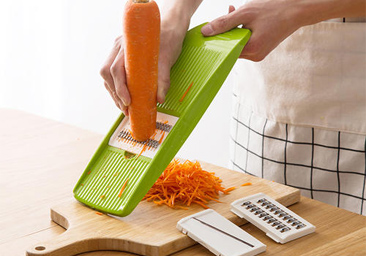
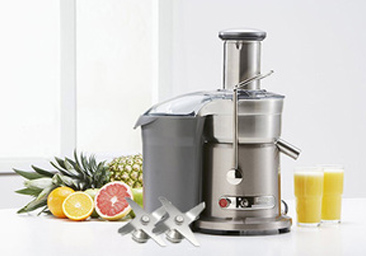
.jpg)

